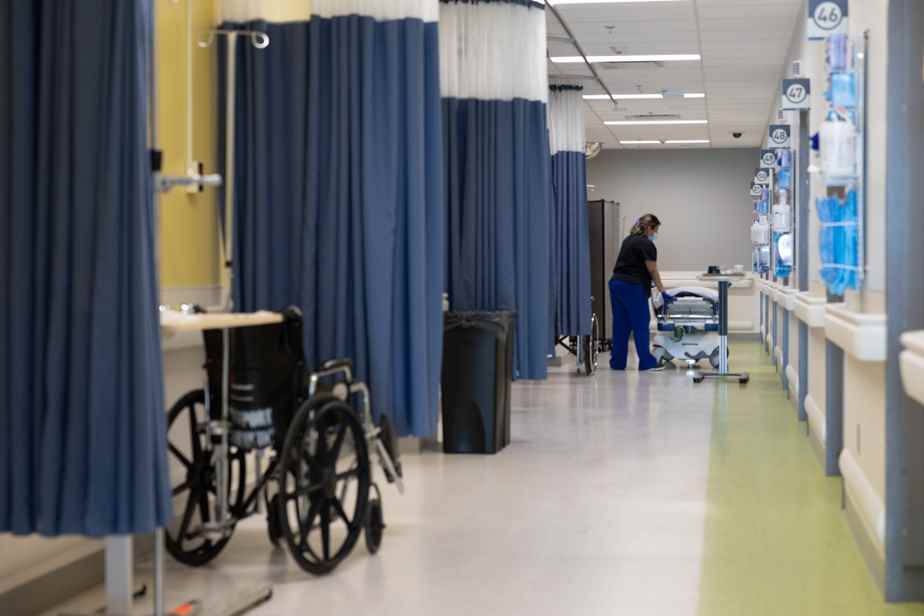The effect of COVID-19 on the health network increases after the holidays. As for the other respiratory viruses, the wave of influenza continues to run out of steam, but the respiratory syncytial virus (RSV) seems to be experiencing a new resurgence.
On Saturday, Quebec counted 2,180 people hospitalized who tested positive for COVID-19, up 5% over one week. Of these, 739 patients were hospitalized directly due to their COVID-19 infection. The others were admitted for another reason.

In both cases, the hospitalization curve has reached a new high since September. And the number of people in hospital is expected to continue to rise over the next few days, with the number of admissions outpacing discharges. On average, there are 15 more patients every day.

“We reap what we sow,” said the Dr Donald Vinh, infectious disease specialist and microbiologist at the McGill University Health Center. When we withdraw the sanitary measures, just before a period of great meetings with families and friends, we should not be surprised to see an increase in viral and respiratory cases. »
The number of deaths related to COVID-19 also remains high. On Monday, Quebec reported four new ones, bringing the daily average to seven. The province’s toll since the start of the pandemic thus stands at 17,750 deaths.
RSV up slightly; flu drops
Moreover, the most recent statistics released by the National Institute of Public Health of Quebec (INSPQ) show that the flu virus continued to decline during the holiday season, while the respiratory syncytial virus is on the rise.
During the week ending January 7, the rate of positive tests for influenza A (flu) reached 6.91% compared to a rate of 12.07% the previous week. We are far from the peak of 26.76% in the week ending December 3, 2022.

During this same week, the Nord-du-Québec, Saguenay–Lac-Saint-Jean and Chaudière-Appalaches regions recorded the highest influenza positivity rates, respectively 20.34%, 17.22 % and 14.80%.
In the case of COVID-19, the test positivity rate was 11.3% in the week ending January 7. If this is less than the previous week (13.2%), the number of positive tests has not stopped increasing from week to week since the period ending on November 12. The January 7 result is the first (slight) pullback in eight weeks.
The number of RSV cases has increased in the past three weeks. The proportion of positive tests was 5.13% in the week ending December 24 and then reached 6.39% on December 31 and 6.45% on January 7.
The holiday effect
The full effects of the holiday season may not have been measured yet, notes the Dr Vinh. “We have to keep in mind that people were less inclined to go to the line to get tested during this period,” he said. With people returning to school and work, we are likely to see an increase in cases that have stabilized or are decreasing. »
The Dr Vinh said that in the southern hemisphere the flu lasted for a few months and it could be the same here.
I don’t think we will see the end of the flu in January. But the impact of the flu on the healthcare system will be minimized because the number of cases is decreasing.
The Dr Donald Vinh, infectious disease specialist and microbiologist at the McGill University Health Center
For his part, virology expert Benoit Barbeau, professor at the University of Quebec in Montreal, recalls that in winter and with the end-of-year holidays, people are more likely to stay indoors, which which is conducive to contagion.
“The young people, over the last few days, the last weeks, have come together a lot. There are office parties, family parties. We are then more inside. And in such a context, these viruses, especially influenza and COVID-19, have transmission advantages. Later rises can therefore be observed. »
Caution is therefore in order before celebrating the end of the virus season.
Learn more
-
- 734
- Number of positive cases for the influenza A virus in all of Quebec for the week ending January 7
Source: national institute of public health of QUEBEC
